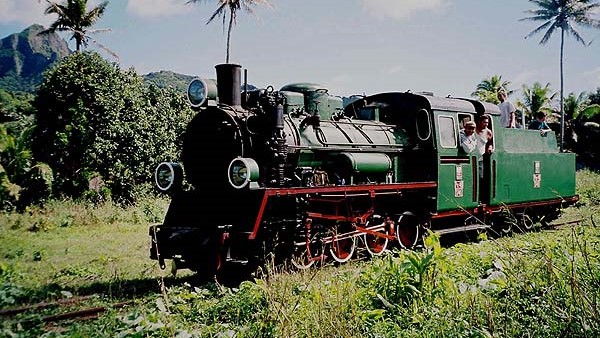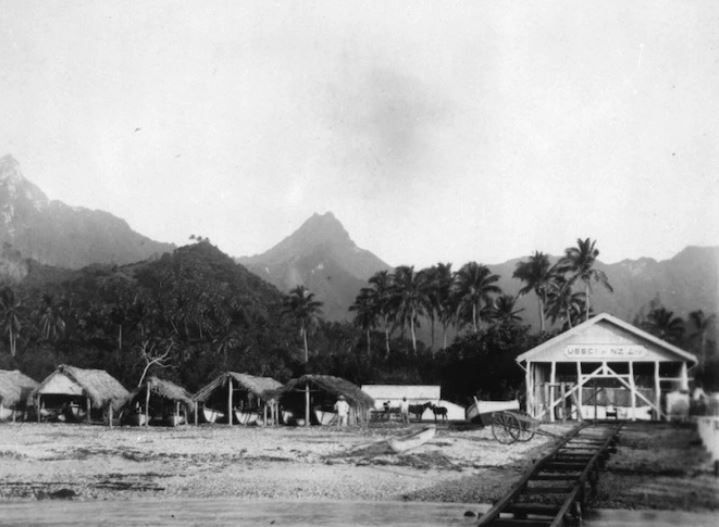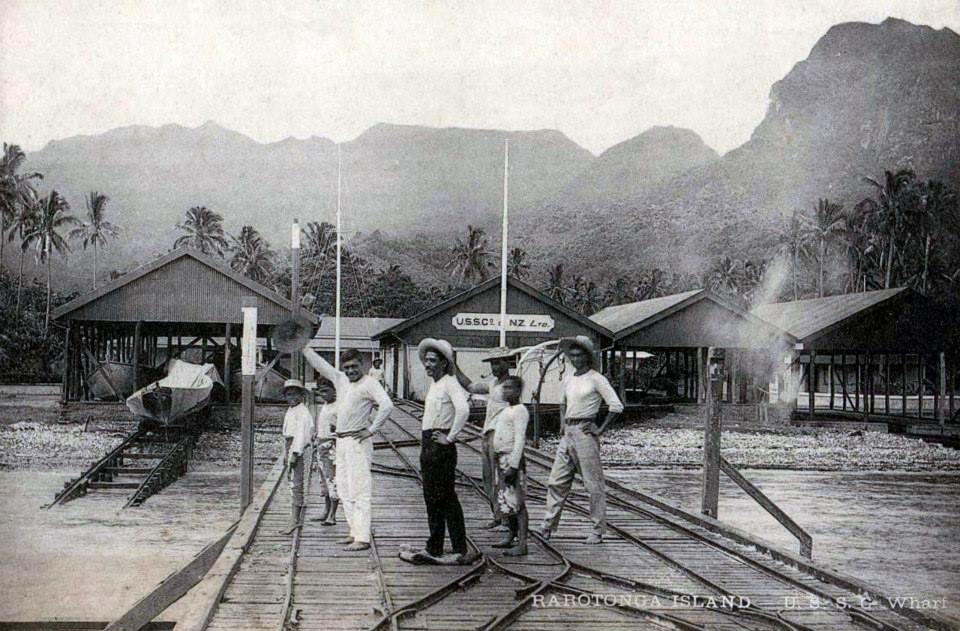Rarotonga’s elusive railway and locomotive
Saturday 25 June 2022 | Written by Sian Solomon | Published in Features, Memory Lane

The Cook Islands’ one and only steam locomotive during the early 2000s. Photo: Roger Smith/22062432
The Cook Islands' first ever railway track and locomotive is as elusive as it is amazing.
Sometimes history speaks in rhyme. During the early 1900s the first-ever railway track was laid down at Avarua wharf on the island of Rarotonga, by the Union Steam Ship Company of New Zealand. According to reports, the track was used to help move cargo off the passenger ships that would arrive at the wharf and needed to be unloaded onto the island almost 90 years ago.
Fast forward to the early 1990s, and another railway track was laid, but this time in a different location along with a steam locomotive shipped to the Cook Islands and restored - almost 90 years after the first railway track was laid down in Rarotonga.
Now sadly, not much history has been recorded about the railway tracks laid in Rarotonga at Avarua wharf in the early 1900s. But photos from a few local residents and Cook Islanders have revealed that the tracks existed, and the images are captivating.
The photos reveal train tracks along the jetty, with local workers from a bygone era, as well as a time when huts and buildings from the past appear to be totally intact.
The most striking photos taken show the Union Steam Ship Company shed at the beginning of the wharf and the railway tracks, with a horse, carriage and local people close by.

That said, the railway's story is one of the most elusive if not illustrious in terms of exploration and research. In fact, the same can be said about the island's one and only steam locomotive, which has been remarkably well preserved considering its location — a fact attributable to its owner.
Restored in 1991 by local resident and steam enthusiast Tim Arnold - who is also a lawyer for a lot of transport related companies - the steam locomotive which is no longer operating, was a working-class Px48 0-8-0 tender locomotive of 750mm gauge, with Polish Railways number 1741, and was shipped over from Poland and brought to Avarua during the early 1990’s.
At the time, Rarotonga had never had a proper railway before, and because there were no laws or health and safety rules regarding railway operations and locomotives in the Cook Islands, it meant that the railway and the country’s first-ever locomotive could operate as wanted.
For several years into the early 2000s, the locomotive was used to offer rides to the public, on a short railway which was around 170 metres long, and installed at the back of private property by its owner.
But unfortunately, the locomotive and railway weren’t to last, just like the railway tracks which have been lost during the early 1900s. Today, the locomotive and railways stand as a parable of dreams not quite realised.

The locomotive, along with other equipment and railway tracks, are stored on the island in a shed awaiting possible further use.
According to the International Steam Pages, although the locomotive and train tracks are “unlikely to ever operate in Rarotonga again” there is hope that the locomotive and rolling stock might be moved to New Zealand for use on a new "Greenfields" railway.
That said, one can only hope.
The discovery of the first railway tracks laid down at Avarua wharf along with the Cook Islands’ only locomotive is a reminder of deeds and dreams that have long passed. It’s also a lesson in how technology such as a camera from the 1900s and a steam train can transform our encounters with the past.
Looking back at such old photos, it’s hard to believe a railway track could ever exist in the early 1900s. I can only imagine what sights we might have beheld had the railway tracks at Avarua wharf continued from the jetty or the locomotive had continued to operate.




















































